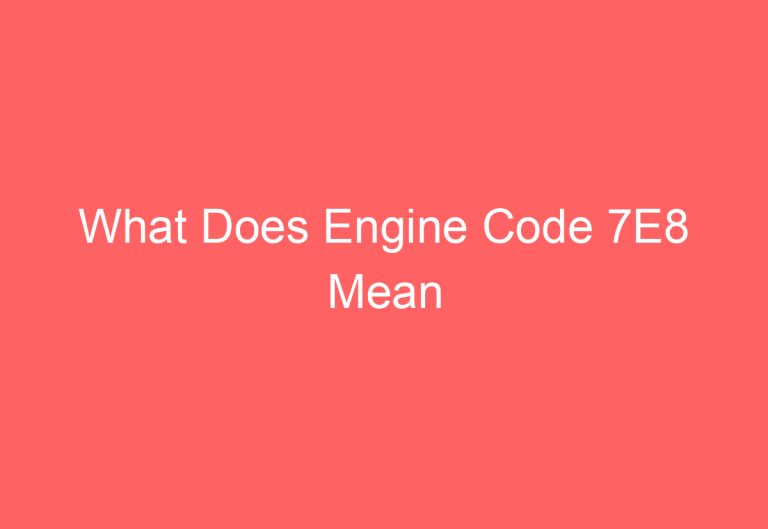What Does Code P0300 Mean For Car Engine
P0300 is the generic OBD-II code for a random misfire, meaning that one or more cylinders in the engine are not firing properly. This can cause a variety of symptoms, including decreased power, rough running, and increased emissions.
So What Does Code P0300 Mean For Car Engine?
P0300 is the generic code for a random misfire. This means that one or more of the cylinders in the engine is not firing properly. This can be caused by a number of things, including:
A bad spark plug
A bad ignition coil
A problem with the fuel injectors
A problem with the camshaft or crankshaft sensors
A problem with the timing belt or chain
A problem with the engine’s computer
What Does Code P0300 Mean for Car Engine?
What is Code P0300?
Code P0300 is a generic OBD-II code that indicates that the engine has detected a random misfire. This means that one or more of the cylinders in the engine is not firing properly.
What Causes Code P0300?
There are many different things that can cause Code P0300. Some of the most common causes include:
Spark plug problems: A spark plug that is not firing properly can cause a misfire.
Ignition coil problems: An ignition coil that is not working properly can also cause a misfire.
Fuel injector problems: A fuel injector that is not spraying fuel properly can cause a misfire.
Engine mechanical problems: A problem with the engine itself, such as a worn valve or a broken piston, can also cause a misfire.
How is Code P0300 Diagnosed?
Code P0300 is diagnosed by using a scan tool to read the code from the car’s computer. The scan tool will also show you other codes that may be related to the misfire.
Once the code has been diagnosed, the mechanic will need to determine what is causing the misfire. This may involve inspecting the spark plugs, ignition coils, fuel injectors, and the engine itself.
How is Code P0300 Fixed?
Code P0300 is fixed by repairing the problem that is causing the misfire. This may involve replacing the spark plugs, ignition coils, fuel injectors, or repairing the engine itself.
What are the Symptoms of Code P0300?
The symptoms of Code P0300 can vary depending on the severity of the misfire. Some of the most common symptoms include:
Engine misfire: The engine may misfire at idle or under load.
Engine hesitation: The engine may hesitate or stall when accelerating.
Poor fuel economy: The car may get poor fuel economy due to the misfire.
Engine damage: If the misfire is not repaired, it can damage the engine.
How to Prevent Code P0300
There are a few things you can do to help prevent Code P0300:
Keep your car well-maintained: This includes changing the spark plugs and ignition coils according to the manufacturer’s recommendations.
Use quality fuel: Using low-quality fuel can cause problems with the spark plugs and ignition coils.
Have your car serviced regularly: This will help catch any problems early on, before they can cause a misfire.
Conclusion
Code P0300 is a common OBD-II code that indicates that the engine has detected a random misfire. There are many different things that can cause Code P0300, and it is important to have the problem diagnosed and repaired as soon as possible to prevent damage to the engine.
Also Read: What Does Engine Code 7E8 Mean






)](https://automotiveglory.com/wp-content/uploads/2024/05/how-to-find-engine-code-the-ultimate-guide-source-ahrefshttps-ahrefs-com-blog-blog-title-formulas_4926-768x529.jpg)